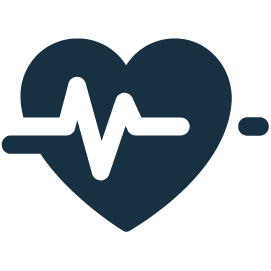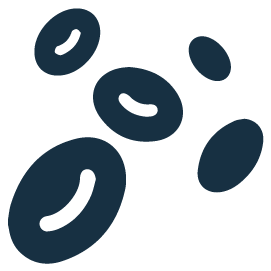Your Heart, Your Health, Your Happiness
Keeping Your Heart Healthy
World Heart Day (29th of September) is a reminder that heart health is important no matter how old you are. Cardiovascular diseases (CVDs) can strike both the young and old, and while CVDs are often thought to be a ‘male’ problem, the World Health Federation (WHF) reported that it is the number one killer of women. It also reported that CVDs account for 46% of older women’s deaths globally, while cancers cause only 14%.
To protect your heart, get a heart health screening every year, which includes checking your blood pressure, blood cholesterol, and blood sugar levels. Follow a heart-healthy lifestyle that includes daily physical activity, a heart healthy diet, and reduced smoking, drinking, and stress to help you maintain a healthy heart at any age.
Heart disease: the silent killer
According to the World Health Organisation, cardiovascular diseases (CVDs) are the number one cause of death globally. More people die annually from CVDs than from any other cause. CVD is the umbrella term for all types of diseases that affect the heart or blood vessels, including coronary heart disease, heart attack, stroke, congenital heart defects, and peripheral artery disease.
| Coronary Heart Disease | Occurs when plaque (a combination of fat, cholesterol, calcium, and other substances found in the blood) builds up in the arteries, leading to clogged arteries or atherosclerosis. |
|---|---|
| Heart Attack | Plaque build-up reduces the amount of oxygen-rich blood reaching the heart, which causes chest pain (angina). Plaque can also lead to blood clots, which block blood flow and are the most common cause of a heart attack. |
| Stroke | Occurs when the blood supply to part of the brain is interrupted or reduced, thus depriving the brain tissue of oxygen and nutrients. |
| Congenital Heart Defects | A defect in one or more structures of the heart or blood vessels that happens before birth. About 8 out of every 1,000 children are affected. |
| Peripheral Artery Disease (PAD) | Occurs when the flow of oxygen-rich blood to the legs and feet is blocked. The narrowing of the arteries deprives the feet and legs of oxygen and nutrients, and produces symptoms usually in the thigh, calf muscle, and feet. |
An online review published in Nature Reviews Cardiology revealed that CVD trends pose significant health risks to those aged from 18 to 45. CVD rates have been rising over the last two decades due to increased obesity rates, lack of physical activity, an increase in young smokers, and a rise in high blood pressure and high cholesterol among young adults. CVDs are no longer a disease that affects the elderly as these statistics show otherwise:
- A study by Imperial College London and the World Health Organisation found that child and teen obesity has increased 10-fold worldwide over the past 40 years.
- The global prevalence of diabetes among adults over 18 years of age had risen from 4.7% in 1980 to 8.5% in 2014.
- Globally, the estimated numbers of boys and girls aged 13 to 15 years old who smoked cigarettes in 2015 were approximately 25 million.
What are the signs of heart trouble?
- Uncomfortable pressure, tightness or discomfort in the chest that comes and goes
- Crushing chest pain
- Shortness of breath and difficulty breathing
- Pressure or pain that spreads to the shoulders, neck, jaw, upper back, or arms
- Dizziness or nausea
- Heart flutters, clammy sweats, or paleness
- Unexplained feelings of anxiety, fatigue, or weakness especially with exertion
- Stomach or abdominal pain
While chest pain and shortness of breath are classic tell-tale signs of a heart attack, there are other symptoms that people, especially women, fail to recognise causing them to be more susceptible to heart attacks.
According to the Centres for Disease Control and Prevention, almost two-thirds of women who die suddenly of coronary heart disease have no previous symptoms.
Unlike men, women don’t always experience chest pain when having a heart attack. The most common symptoms of a heart attack in women are unusual fatigue and shortness of breath, indigestion, or nausea.
Support a Heart-Healthy Lifestyle with LX Yang
A healthy blood circulation consists of flexible blood vessels and blood that flows smoothly through your arteries. LX Yang is a tri-action blood flow solution for cardio-cerebrovascular health that improves blood flow based on the Nobel Prize-winning discovery of Nitric Oxide, Tomato Aqueus Extract, turmeric and curcumin, as well as synergistic vitamins.

NITRIC OXIDE (N.O.)
Maintains healthy blood circulation by regulating your blood cholesterol and blood pressure level.

TOMATO AQUEUS EXTRACT (T.A.E.)
Possesses natural anti-inflammatory effects that protect the blood vessels’ lining to maintain healthy blood flow.

TURMERIC
A source of curcumin, an active phytochemical, with powerful anti-inflammatory and antioxidant effects.
Nitric Oxide is synthesised from L-Arginine, a type of amino acid found in food that enhances blood circulation by maintaining the flexibility of blood vessels, preventing them from hardening, slowing down plaque build-up, and expanding the blood vessels.
Tomato Aqueus Extract uses a proprietary Bioactive Complex Extraction Technology that helps to maintain normal platelet aggregation which, in turn, helps to maintain healthy blood flow. It also possesses natural anti-inflammatory effects that help to protect the lining of the blood vessels to maintain healthy blood flow.
Turmeric is a native Indian spice that comes with a wide array of proven health benefits. It is a source of the active phytochemical, curcumin which is known for its powerful anti-inflammatory and antioxidant effects. The patented curcumin has won numerous awards including the NutrAward 2019 (for bioavailability enhancement technology), the NutrAward Singapore 2018 (for botanical product of the year), and the NutrAward Geneva 2019 (for innovation of the year).

